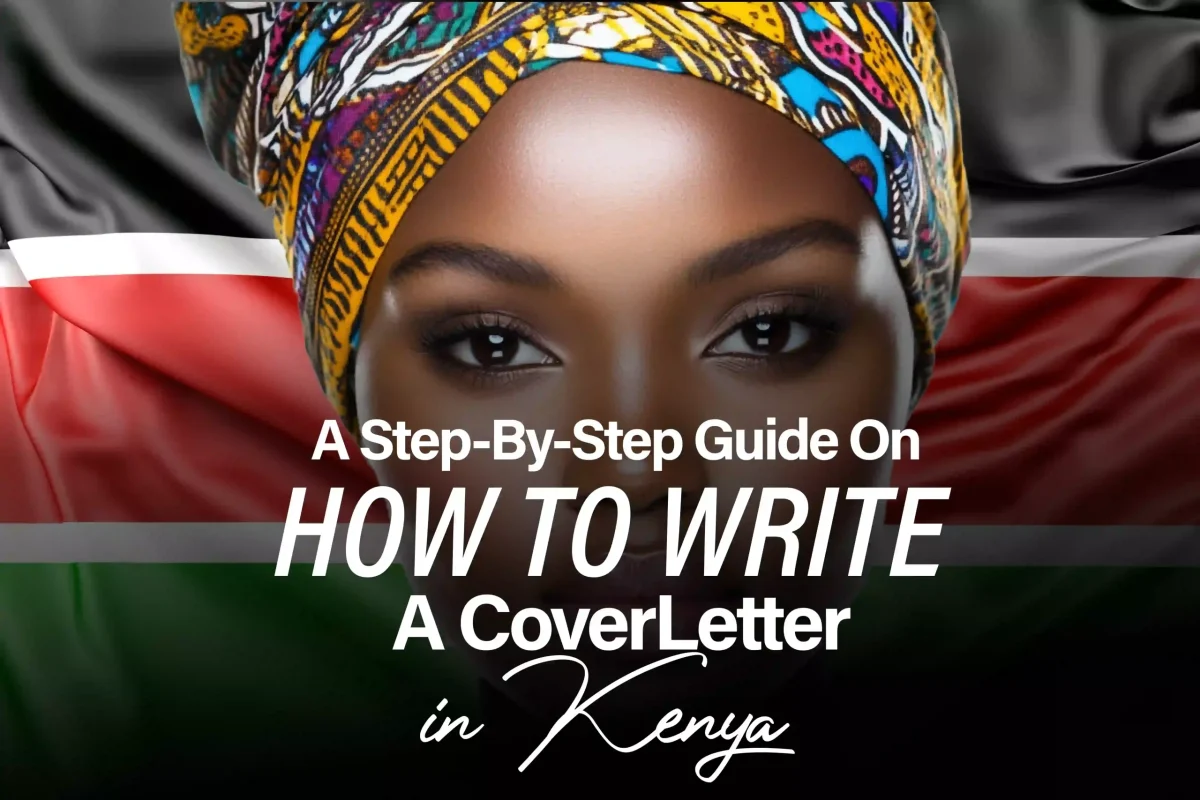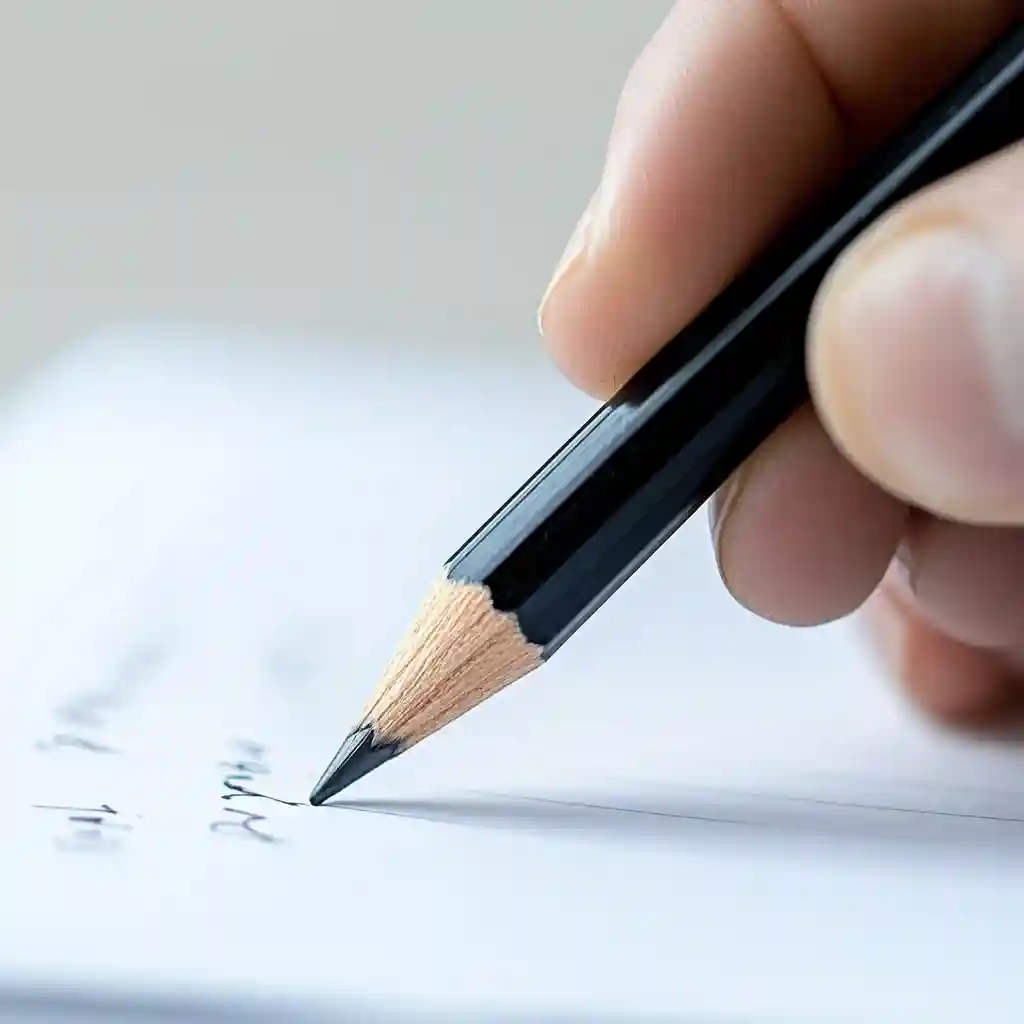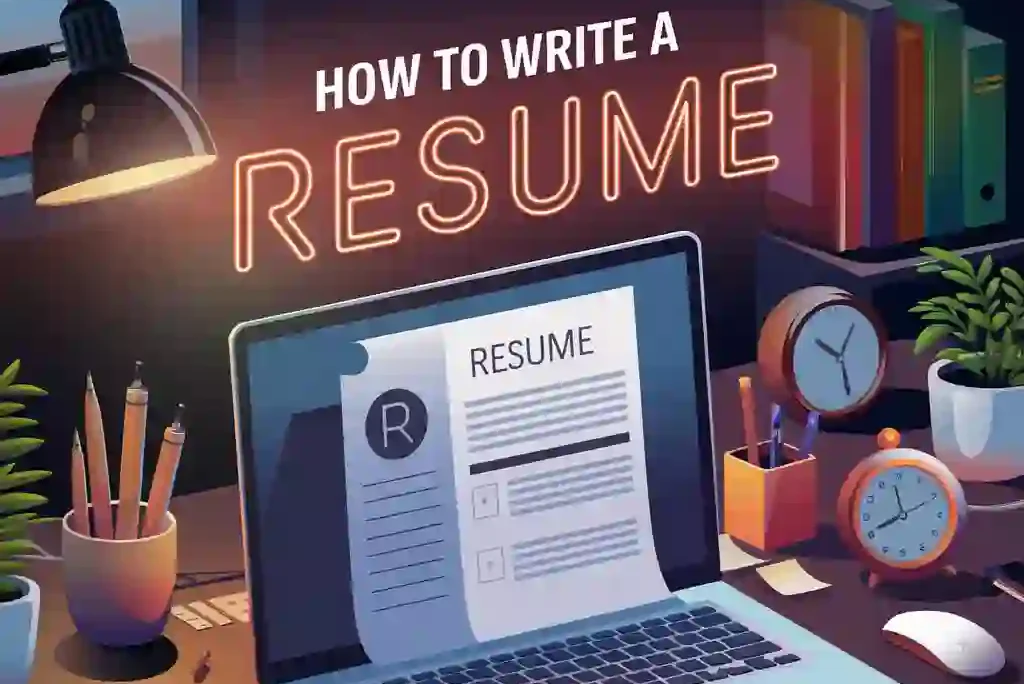From Good to Great: Transform Your Kenyan Cover Letter Today
Many job seekers underestimate the power of a well-crafted cover letter, believing that a comprehensive CV or resume is all they need. However, they are often unaware that an exceptional cover letter can be the key to unlocking their dream job.
They fail to realize that a CV or resume only goes halfway. A cover letter then meets it halfway to create the magic.
After weeks of job-hunting, perfecting your resume, and preparing for interviews, you must write a cover letter before calling it a day. Now you are staring at a blank page on your screen and wondering how to begin.
We understand and are here to tell you that writing a cover letter is not as complicated as it seems. Yes, you could use cover letter-generating AIs to do the work. However, it doesn’t mean you can’t do it alone.
This article will provide an easy-to-follow, step-by-step approach to creating a compelling cover letter that aligns with hiring trends.
How to Write A Cover Letter in Kenya Professionally
When writing a cover letter in Kenya, the key is to keep it concise and tailored to the job market. Here are some practical tips that you can easily apply to create a great cover letter.
Make it concise. Keep it to one page and around 250-350 words.
Address the letter correctly and use the hiring manager’s name when possible. Personalisation can make your cover letter stand out and show that you’ve done your research.
Introduce yourself and mention the position you’re applying for.
State where you found the advert and express your interest in the position.
The skills and experience you include must be relevant to the position and summarised.
Explain how you can contribute to the company and (briefly) discuss your 30- 60- 90-Day Plan (optional). A 30-60-90-Day Plan can show the hiring manager that you’re serious about the role and have a clear vision for your first few months on the job.
Showcase your (relevant) accomplishments. For instance, if you increased sales by 30% in your previous role, mention how it could benefit the new company.
Proofread for typos or grammar errors (Use free Grammarly and Hemingway apps to improve readability).
You will find more details as you read the body of the article.
Key Takeaways
A cover letter is like a sales pitch or ad copy.
A cover letter completes your job application by showing your identity beyond the bullet points.
When writing a cover letter, you must make it concise and direct, address the letter correctly, introduce yourself, show relevant accomplishments, explain how you will add value, and proofread.
Anyone can write a good cover letter, whether you are a recent graduate, a young professional, or a mid-career professional.
For guidance, use a template when writing your cover letter.
Why is A Cover Letter important? Understanding the Cover Letter
A cover or job application letter is critical because it is your sales pitch. This ‘ad copy’ helps recruiters gauge whether or not you are a good fit.
Like a sales pitch or ad copy, a cover letter tells recruiters who you are beyond the bullet points.
If you check the definition of a cover letter, you will find that it is a document that provides additional information about your skills, experiences, and accomplishments.
It is a document (you submit together with your CV) that introduces you by briefly summarising your professional background.
Your cover letter will convince the recruiter that you are a good candidate worth interviewing. It adds focus to your CV and increases the chances of getting an interview.

Use a Proper Heading and Role Title
Your heading is the first thing employers see, so make sure it makes a good impression by being professional and organised.
Start your heading with your full name, P.O. box number, city, postal code, and contact information (phone number and email address) at the top.
Write the date below your contact information.
Write the name of the hiring manager (if available), company name, P.O. box number, city, postal code, and email in a professional format.
Example:
Jane Mwangi
Finance Assistant
+254 712 345678
[email protected]
P.O. Box 12345
Nairobi, 00100
Kenya
23rd October 20XX
Human Resource Manager
ABC Company
P.O. Box 67890
Nairobi, 00200
Kenya
When I came across the Sales Executive position at ABC Company on [specify job platform, e.g., Brighter Monday], I knew it was an excellent opportunity for someone like me who is passionate about driving sales and building client relationships.
Address it to a Person (The Hiring Manager Directly)
A personalised greeting makes your cover letter more genuine and thoughtful. Whenever possible, use the name of the hiring manager. You can find the hiring manager’s name by searching the company’s website or LinkedIn page.
Instead of saying sir/madam, send it to the recruiter directly. If you know the name, use it. For example, “Dear Mr Kamau.”
Avoid using a generic greeting like “Dear Hiring Manager,” or “Dear Hiring Team” if you don’t know the hiring manager’s name. In that case, don’t add a salutation. Move straight to the caption and intro. For example:
Jane Mwangi
Finance Assistant
+254 712 345678
[email protected]
P.O. Box 12345
Nairobi, 00100
Kenya.
23rd October 20XX
RE: Finance Assistant Vacancy (Ref #FFT90240)
When I came across the Finance Assistant role at ABC Company on…
Make Your Introduction Strong
Your introduction should grab the employer’s attention and explain why you’re a great fit in seconds. State why you are writing to them and mention where the job was advertised. This is your chance to make a memorable first impression.
For example:

Outline Relevant Experiences Only
This is the main body of your letter. Talk about your professional experience and skills as they relate to the position. Mention specific achievements that demonstrate your abilities.
Use metrics if possible. Quantifying your achievements makes them more impactful and adds more context. For instance, “Increased sales by 20% within six months.”
This part of your cover letter should be clear and relevant to the job requirements. Two or three paragraphs are enough to get your message across.
For example:
In my previous role at XYZ Ltd, I managed a portfolio of 50+ clients and achieved a 95% client retention rate. My ability to connect with customers and understand their needs helped me exceed sales targets by 20% annually.
Explain Why You’re a Good Fit For The Organisation
Start by briefly stating why you’re excited to work for the organisation. Then, explain how your work experience, capabilities, and achievements make you a perfect fit for the company. Talk about how you can add value to the company’s goals.
To solidify this part, mention (specific) company values and goals and how they align with yours. This shows that you made the effort to understand the company.
An example:
I admire ABC Company’s dedication to sustainability and community support, which are values I share deeply. I am eager to bring my sales and customer service expertise to your team and prioritise social responsibility.
Close with a Strong Conclusion
In your closing, be polite but confident. Briefly summarise your interest and invite the employer to contact you for an interview.
Thank the hiring manager for their consideration and for taking the time to read through your application. Mention that you look forward to discussing it in an interview, inviting further conversation.
Your closing remark should be “Sincerely” or “Faithfully”. Then place your signature and full name below.
An example:
Thank you for considering my application. I look forward to discussing how my experience and skills can benefit ABC Company. Please feel free to reach out to me whenever you get a chance.
Yours sincerely,
[Signature]
Jane Mwangi
Watch this video for more tips on how to write good covering letters in Kenya in 2025:
Best Practices for Cover Letters
- Keep your cover letter concise and focused on the role. A cover letter should be at least one page and provide only relevant information.
- It should demonstrate your skills, attitude, and expertise.
- Use a professional tone and format.
- Use specific examples to demonstrate your skills and experience.
- Highlight your achievements and qualifications.
- Use a professional closing (e.g., Kind regards) and sign your name.
- Include your contact information and a clear call to action, such as requesting an interview.
- Proofread your letter.
4 Sample Cover Letter Templates to Inspire Yours
Are you looking for templates to spark ideas and help you craft your standout cover letter? Here are four cover letter templates you can use.
Cover Letter Examples For Graduates and Young Professionals
Here are sample cover letters for graduates and young professionals to help you create a strong first impression.
Example 1 (Download Word version – Free Cover Letter Example for Job Seekers in Kenya)
Why this cover letter stands out:
Rather than stressing hard skills and qualifications (outlined in the resume), Kipchirchir emphasises a genuine commitment to the clients served and the mission of this organisation. The letter closes with a P.S. that highlights even more value.
Why this cover letter stands out:
Rather than stressing hard skills and qualifications (outlined in the resume), Kipchirchir emphasises a genuine commitment to the clients served and the mission of this organisation. The letter closes with a P.S. that highlights even more value.
Example 2 (Download Word version)
Key Strengths of This Cover Letter:
Kimani immediately connects with Ms. Chebet by sharing his philosophy about website design, a business that significantly intersects with the job posting. The letter includes specific skills, certifications, and experiences that relate directly to the position described in the advert.
Cover Letter Examples For Mid-Career Professionals)
Here’s how to write a powerful cover letter highlighting your experience, skills, and the unique value you bring as a mid-career professional.
Example 3 (Download Word version)
What makes this cover letter exceptional:
Despite being relatively lengthy, this letter is well-designed to make it readable, and the relevant content is sure to engage the reader. The heading graphic is distinctive and perfect for a kindergarten teacher.
Example 4 (Download Word version)
Reasons This Cover Letter Excels:
Ochieng’s cover letter is well-designed to reflect her professional experience and unique qualifications, effectively highlighting her skills and experiences relevant to the position she is applying for.
How to Create a Truly Remarkable Cover Letter (14 Advanced Strategies)
To grab attention, you need a cover letter that screams: “I’m the one!”
It’s the type that makes a hiring manager pause mid-scroll, re-read your name, and look forward to meeting you.
That’s what every job seeker aims for. And here are 14 strategies to help you write one.
1. Use Industry-Specific Cover Letter Templates
Every experienced hiring manager can tell when you use the same cover letter for multiple applications. So, do away with that one-size-fits-all cover letter you’ve been copy-pasting.
Instead, use industry-specific cover letter templates as your foundation. Different industries expect different things from your cover letter. Using the same cover letter for every job won’t impress anyone. Hiring managers want to see your genuine interest in their company.
For example:
In tech, focus on technical skills alongside teamwork skills. Mention specific programming languages or systems from the job description.
For healthcare positions, emphasise patient care experience and interpersonal skills. Hospitals and clinics want to know you can connect with diverse colleagues and patients.
Education roles are all about showing your hands-on experience. Talk about classroom management, lesson planning, and how you’ve helped students succeed.
Financial sector applications should highlight analytical abilities and attention to detail. For instance, if you aim for a sales role in banking, show you can explain complex ideas in simple terms.
“When I review applications, I can immediately tell when candidates have used a generic cover letter template rather than one tailored to our industry,” says HR director Janet Kimani.
Review sample cover letters from your field to put your best foot forward. This will help you to understand the conventions and expectations.
Each industry speaks its own language, and your application should sound like you speak it fluently.
2. Use Modern Formatting and Design
Today’s cover letters should be:
- Clean and minimalist
- Limited to one page
- Consistent with your resume design
- Easy to scan quickly
- Balanced between text and white space
- Appropriately formal for the industry
You can subtly add design elements that show your style for creative roles while maintaining professionalism.
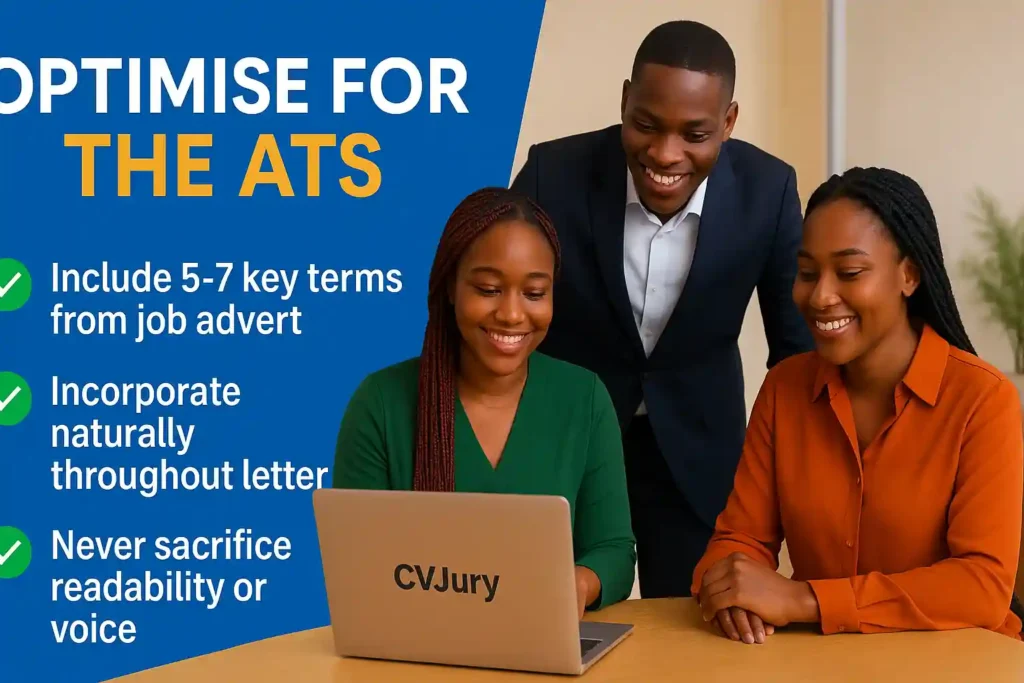
3. Optimise Your Cover Letter for the ATS
Today, job applications often pass through Applicant Tracking Systems (ATS) before reaching human eyes. These systems are trained to look for specific keywords in the job description to determine whether you’re a good match.
Naturally, weave 5-7 key terms from the job advert into your cover letter. For example, if the job description mentions “data analysis,” add this phrase when describing your experience.
However, keyword optimisation must never sacrifice readability or your authentic voice. The goal is to pass the robot while still maintaining a document that will impress when it reaches the ideal candidate reviewer.
Do these:
- Include keywords from the job advert in your main body
- Match skills mentioned in the job description
- Use standard formatting that ATS can read easily
- Avoid tables, graphics, or unusual fonts
- Save your file in recommended formats (.docx or .pdf)
A strong LinkedIn profile link in your contact details can provide additional information beyond what fits in your cover letter.
4. Customise Your Cover Letter for Different Scenarios
When someone refers you (networking connections):
- Mention the referrer’s name in your opening paragraph
- Explain how you know them and why they suggested this role
- Show you understand the company’s needs based on insider information
When it’s a cold application (without a referral):
- Research the hiring manager’s name to grab their interest
- Address “Dear Mr” Smith or “Dear Ms” Jones rather than “To Whom It May Concern”
- Show knowledge of company achievements or recent news
- Connect your skills directly to company needs
When no specific job is posted (speculative applications):
- Clearly state what you’re looking for (full-time position, project work)
- Show how you could add value to their organisation
- Highlight flexibility and eagerness to discuss where you might fit
- End with a plan for follow-up
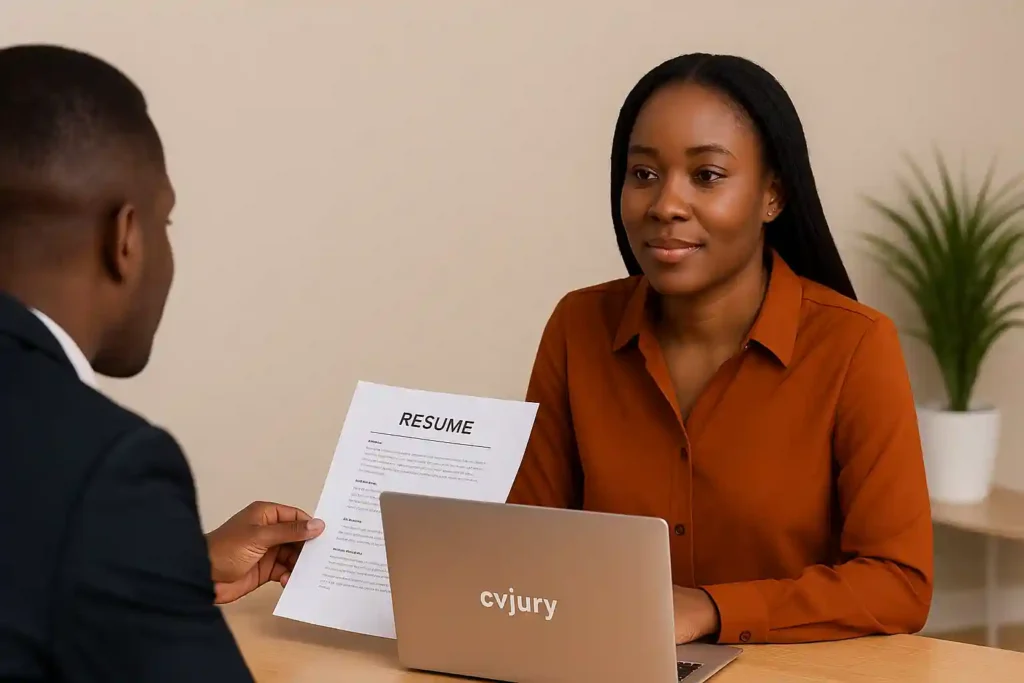
5. Address Potential Employer Objections
If there are any gaps in your application, tackle it before-hand.
- For limited experience, focus on relevant coursework, internships, or volunteer work
- If you’re overqualified, explain your specific interest in the role
- Industry outsider? Show how your fresh perspective brings new approaches to solving problems
- If location is a concern, mention willingness to relocate or work remotely
Use your closing paragraph to restate your value and enthusiasm for the next job opportunity.
6. Address Employment Gaps Strategically
Instead of hiding employment gaps, address them confidently in your opening paragraph or main body. Describe relevant skills developed during these periods, whether through freelance work, volunteer work, or professional development.
“I improved my interpersonal skills through volunteer work with local non-profits during my career break, where I was extensively involved in community outreach programs.“
Remember that gaps in employment are increasingly common in careers today. What matters is how you frame these periods as opportunities for growth rather than liabilities.
Don’t hide them. Do these:
- Be honest but brief about the gap
- Focus on relevant skills gained during that time
- Highlight volunteer work or independent projects
- Show how your diverse experience makes you an ideal candidate
For career transitions, connect your previous roles to the new path:
- Identify transferable skills relevant to the new job
- Explain your interest in the industry
- Outline how your performance in previous roles proves adaptability
- Show how you can handle multiple tasks in different contexts
7. Tailor Your Cover Letter for Career Transitions
When pursuing your next job in a new field, your cover letter should be tailored to address why your previous roles are relevant and valuable to the job and the company.
In your introductory paragraph, acknowledge the transition while emphasising transferable skills.
For example, if you’re switching from marketing to content strategist, you can say:
“Having established a strong track record in marketing, I’m excited to apply my analytical and communication skills to a full-time position in content strategy.”
Make the hiring manager see how your unique background makes you a highly motivated and valuable addition to their team.
For example, if you’re transitioning from event management to publishing, put it this way:
“My experience handling multiple tasks in event management has prepared me to work effectively under pressure in your fast-paced publishing environment.”

8. Reconsider When It’s an International Application
When applying for positions abroad, research country-specific practices. Addressing formalities correctly (“Dear Mr Smith or “Dear Ms Jones) shows cultural awareness and attention to detail.
Some countries expect a bachelor’s degree to be prominently mentioned, while others focus more on practical experience. Research whether photos are expected on applications in the target country.
Specific things to consider when applying for jobs abroad:
- Research country-specific expectations (length, formality)
- Consider including a bachelor’s degree or other credentials
- Adapt language for international English (avoid idioms)
- Include language proficiencies
- Address visa status if applicable
- Format dates and contact information appropriately
Note that some cultures value different qualities in their introductory paragraph than, for example, American employers might.
9. Show Culture Fit and Values Alignment
Research company culture and values before writing your cover letter. In your main body, reference specific company initiatives or values that align with your approach.
“I admire how your organisation has been extensively involved in sustainability initiatives, which aligns with my commitment to environmental responsibility shown through my work with various events focused on conservation.”
This gives the impression that you’ve researched beyond the basic job description and are genuinely interested in becoming part of their specific organisation, not just finding any job.
10. Impress with A Professional Profile
Modern cover letters should acknowledge how you present yourself online. Include a link to your LinkedIn profile (ensure it’s updated) and other relevant professional portfolios.
Talk about your digital competencies relevant to the position. For example, “My experience leading a remote sales team has strengthened my digital collaboration abilities and teamwork skills.”
Reference your adaptability to digital workplaces and innovative approaches to remote collaboration when applying to companies with hybrid or remote working options.
11. Get Expert Feedback Before Submission
Before sending your application, seek feedback from industry professionals. To capture the reader’s interest, share your cover letter with someone familiar with hiring in your target field.
Don’t just ask for general feedback. Ask questions such as, “Does this closing paragraph effectively summarise my value proposition?” or “Have I shown enough relevant teamwork skills?”
Professional review services can also provide objective feedback on how your application compares to others they’ve seen for similar roles.
12. Proofread Beyond Spell Check
Professional documents require meticulous proofreading. Before sending:
- Use spell-check, but don’t rely on it exclusively
- Read aloud to catch awkward phrasing
- Check that each paragraph has a clear purpose
- Verify all names, titles, and company details
- Ensure consistency in formatting and tone
- Have someone in your field review the content
- Check that you’ve addressed the right person
- Ensure your sign-off is professional
- Confirm your subject line is appropriate if submitting via email
Don’t just say, “How does this look?” Ask reviewers specific questions about the clarity and persuasiveness of your cover letter. Make sure they pay keen attention to detail, as even a single error can suggest carelessness to employers looking to filter applications quickly.
13. Follow Up Strategically After Application
The application process doesn’t end when you hit “send”. Professional follow-up shows initiative. Have a strategic follow-up plan:
- Wait 5-7 business days before following up
- Send a brief, professional email referencing your application date and position
- Use a clear subject line
- Reiterate your interest and offer to provide additional information
- Use a professional sign-off like “Best regards,” followed by your full name and contact details
Your follow-up shows continued interest without appearing desperate, keeping you at the top of their minds while considering candidates.
14. Sample Cover Letter Resources
This guide doesn’t provide complete cover letter examples, but you can find quality samples below:
- University career centres offer sample cover letter databases
- Professional associations in your field may have industry-specific templates
- Career websites feature annotated samples for various experience levels
- Some job boards provide cover letter templates matched to job types
Remember that a cover letter template should be personalised heavily for each application.
My Last Advice: Pay Closer Attention
We are finally at the finish line! Congratulations champion!
If you’ve come this far, you’re dead serious about changing the narrative in your favour. Hunting for jobs can feel like a game of chance, but with the knowledge from this article, it doesn’t have to be that way for you.
You’ve already done good work reading the tips outlined in this article. You only have to implement them right now. You cannot read this article and leave empty-handed. Start honing your cover letter game now; recruiters will be knocking soon.
We believe in you and know what you’re made of. So, go out there and show them.
Cheers!
FURTHER READING
HOW TO WRITE A CV
SPECIALIST INSIGHTS
Improve your CV by tailoring content and using a professional format. Include action words and quantifiable successes. Ensure it passes ATS checks with relevant keywords.
FREE CV TEMPLATES
DOWNLOAD TEMPLATES
BEST FOR ALL SECTORS
Picture a sleek, modern template. Now imagine it’s yours. At zero cost. Eye-catching but professional, easy to customise, and optimised for ATS. (Hint: Recruiters will thank you). Download now.
References
- Wendy Enelow and Louise Kursmark (2017). Modernize Your Job Search Letters Get, Noticed… Get Hired. Emerald Career Publishing, USA.
- Opportunities For Young Kenyans (2024): How To Write A Job Application Letter In 2024
